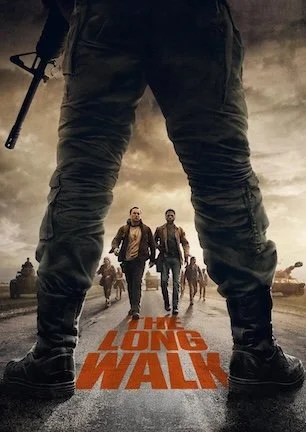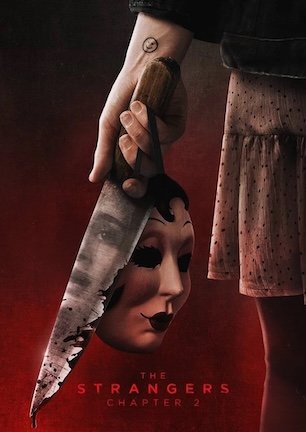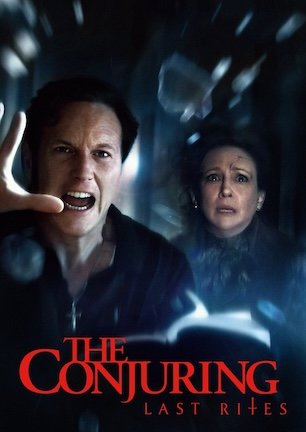Studio: Screen Gems
Director: David F. Sandberg
Writer: Gary Dauberman, Blair Butler
Producer: Asad Qizilbash, Carter Swan, David F. Sandberg, Lotta Losten, Roy Lee, Gary Dauberman, Mia Maniscalco
Stars: Ella Rubin, Michael Cimino, Odessa A’Zion, Ji-Young Yoo, Belmont Cameli, Maia Mitchell, Peter Stormare
Review Score:
Summary:
In search of a missing young woman, five friends become trapped in a mysterious place where they are repeatedly murdered and resurrected.
Review:
Evidently, “Until Dawn’s” scriptwriters misunderstood the assignment. Instead of directly adapting the same-named PlayStation title, they just heard “video game” and concocted a senseless scenario where characters repeatedly lose their lives, respawn, then make continued attempts to survive various levels, or rather scenes, that gradually increase in difficulty. All of this seems based on a reductive notion of how video games function, never mind if the idea fits a film’s fiction.
From narrative direction to dialogue, “Until Dawn” employs cheap writing every chance it gets. Few things make a moviegoing experience more disappointing than seeing open opportunities to explore imaginative creative choices, yet watching the film take easy ways out at each available turn.
The setup starts with a young woman, Clover, searching for her missing sister Melanie in a remote Pennsylvania valley. For reasons that only work for building a diverse body count, Clover brings along her ex-boyfriend Max, their friend Megan, their other friend Nina, and Nina’s new boyfriend Abe.
It's bad that the five friends introduce each other’s basic backstories with declarative exposition like “Don’t forget why she dumped you in the first place” and “Their mom had just died like weeks before and she shouldn’t have left Clover when she did.” It’s worse that their cursory relationships have no meaningful bearing on anyone’s identity or interactions. Abe could be Megan’s boyfriend instead of Nina’s, or Max and Abe could be brothers, since none of these dotted lines ever matter much at all. Except for Clover, who has an actual motivation, they’re mostly interchangeable pincushions with only the slightest swaths of distinguishable personalities.
After getting directions from a clearly suspicious Peter Stormare at a roadside store, the quintet drives through a mysterious rainstorm that magically traps them in a dark clearing with one lone house. Between the homemade graves in the yard and the wall-mounted hourglass adorned with an ominous skull, it’s easy to see why everyone is immediately unsettled. Which is why it’s hilarious when Abe, after finding an alarming collection of missing persons posters and having his car commandeered by a shadowy figure, hears a startling noise and unironically says, “I’ll check it out and be right back” as if everything is totally normal.
For his clumsily plotted stupidity, Abe gets cut in half by a clown-masked psycho, who goes on to savagely slaughter the others too. However, the hourglass flips over and everyone inexplicably returns to life. They remember being murdered, but they’re back at the beginning of the evening, and they appear to be gradually transforming. In record time, the five friends quickly conclude they’re stuck in a supernatural loop that forces them to face various monsters and menaces, and each eerie encounter always ends in death.
The movie eventually offers a limp, hand-waving explanation for why this strange place manifests a mishmash of hairless wendigos that behave like aggressive zombies, spontaneous combustion, and a cryptic witch watching television, but it’s all a kitchen sink of cliched clutter. In one sequence, Max explores a weird room whose lighting fixtures are decorated with doll heads because, it’s a creepy visual, I guess? In another corner of the same room, a clown doll sways back and forth in a creaky rocking chair, which also has no context yet is supposed to seem scary on looks alone.
It turns out the group has to survive 13 nights, presumably because 13 is considered a spooky number, except we don’t even get to see all 13. After what’s only been four resets for us, the friends realize they’re on their final night, but they’re having trouble remembering what happened. Abe, the king of unintentionally comedic lines, asks out loud, “Didn’t I record something?” Suddenly, and serendipitously, there’s a collection of videos from the other nights on a phone he was only ever shown using once.
“Until Dawn’s” writers had a preexisting blueprint to work from in the form of the game they were supposedly adapting. They didn’t even have to come up with everything out of their own imaginations, yet they still chose to populate their “Groundhog Day but horror” plot with the most familiar frights and predictable actions possible.
Need a flashback to fill in a blank, but have nowhere logical to put it? How about stuffing the scene into a non-sequitur nightmare sequence? We’ve reached the two-thirds mark and the protagonists still need new bits of missing information? Easy, have them find an old newspaper, a videotape, and a conveniently placed pile of records to get them up to speed. “Until Dawn” contains a staggering amount of deus ex machinas, outnumbered only by how many times the same deaths are recycled over and over when the movie’s own concept gives it carte blanche to do much cleverer things instead.
Someone likened “Until Dawn” to a mix between “Cabin in the Woods” and “Silent Hill,” which is spot-on, as long as it’s clear we’re talking about heavily watered-down imitations of those films. Snappy pacing, crisp camerawork, and ample atmosphere almost successfully distract the audience from noticing how pat the progression is. It’s a credit to the craftsmanship that the film feels finished. Unfortunately, the lazy script it was shot from does not.
Review Score: 45






I don’t know whether to emphasize “this” or “the,” but this is the humorous holiday horror movie you definitely want to enjoy at Christmastime.